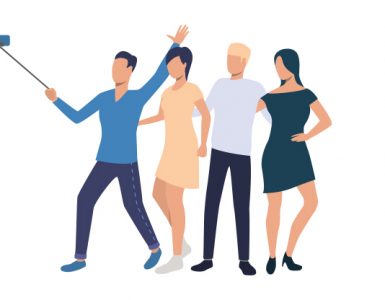Born out of our generation’s insatiable need to look into a screen every few minutes, the job of a social media influencer is one of those too-good-to-be-true gigs that have disrupted the traditional nature of marketing. But the truth is, if the job was as easy as clicking a picture and uploading it on one’s personal account, we would all be well on our way to making millions.
So, the influencers who manage to grab attention and retain it in the melee of social media posts are the ones who stand for something, have a curated vision, and most importantly, offer an exciting narrative that resonates with the audience.
So before you begin your adventure in the land of influencer marketing, here are some don’ts to be mindful of in this ever-evolving industry.
Blindly Agreeing To Anything and Everything
In the ultra-competitive world of influencer marketing, it’s easy to accept any and all brand deals offered to you, especially if you’re just starting out. After all, brand partnerships are the best way to forge new relationships, establish a rapport and of course, make more money, right? Unfortunately, not all the time.
While “Yes” is the most used term in your business vocabulary, “No” should be equally, if not more, important. Think of it as a healthy boundary that allows you to build your brand and make sure that the content you post aligns with your niche. Therefore, it’s important to question whether the brand and the content they’re recommending is relevant to your audience. If not, respectfully decline their suggestions and come up with a few of your own – something that marries the interests of your audience with the goals of the brand. It’s more important for you to be true to your audience because the moment they sense you’re wavering from your commitment, they’re likely to switch to the next, more authentic, influencer they come across.
Relying On Bots for Following
So, your tireless efforts to widen your audience didn’t pan out as well as you’d hoped and you’re not seeing the spectacular results you’d promised to deliver. What are you going to do now?
Most influencers fall back on cheap tactics like buying followers, likes, and comments to climb the ladder to popularity quickly. But resorting to bots to boost your followership is probably the worst mistake you can make as an influencer. Besides, it’s illegal. In fact, both Instagram and Twitter have resorted to taking stringent measures like sending out a warning against those who rely on automated apps or bots to increase their following, removing the followers, limiting their activity, and even deactivating the account.
Besides, no one will be willing to partner with influencers who’re inflating their audiences with fake followers. The whole reason why brands switched to influencer marketing was because of its authenticity and the opportunity to establish long lasting relationship with the audience. Fake followers and engagement will not deliver the sufficient ROI for brands, and they’re likely to stop working with you in no time at all. Simply put, fluffed up numbers are nothing but a vanity metric that could tarnish your credibility in the long run.
So if you truly want to succeed as an influencer, focus on facilitating genuine interactions and creating content that engages the audience. Hard work will eventually pay off and both the brand and your audience will notice the effort you’re putting in, boosting both your credibility and your reputation.
Using Hashtags #Poorly
Yup, there’s a thing called misuse of hashtags and here’s how it began.
Once upon a time, in the land of influencers, social media platforms used to give a free rein to the users to add as many hashtags as possible. The number went up to 70 hashtags per post, and that’s how the misuse of Hashtags began. It was not uncommon to see posts with a string of hashtags in it, making them look spammy and fake. In fact, to counter this practice, Instagram even limited the number of hashtags in a post to 30.
While hashtags are a good tool for you to get discovered and is an essential part of a goal-oriented strategy, overdoing it can do more harm than good. Bottom line, every social media platform is built on authenticity and quality, so don’t allow hashtags to obscure your vision of engaging your loyal followers. Instead, use it intelligently to help build brand awareness.
Not Tracking Your Performance
Did you think that you’d no longer have to make performance reports and powerpoint presentations once you became an influencer? Think again.
Each time you do a campaign, it’s important for you to create and maintain a performance report. But, it’s also important for you to go beyond the usual metrics (likes, comments, and shares) that you see so frequently. To do so, consider investing in a tool that provides you in depth back-end analytics and insights.
Take Instagram, for example. It lets you view specific metrics including the reach of the post and the number of times each post was bookmarked via Insta Insights. And if you’re doing a dedicated blog post, use trackable links to measure the traffic driven to the brand’s site. These stats will help you understand which of your posts are performing well. You can use all this data to make a strong case to the next brand you approach.
As you can see, building your brand, being an influencer, and establishing relationships takes time and effort. But if you’re serious about becoming an influencer, knowing which pitfalls to avoid will definitely put you on the right path to grow your brand and attract partnership opportunities. We know it’s a long rocky road, but stick around ‘coz with passion, perseverance, and our guidance, you’ll soon be reaping the fruits of your labor.













